The Unique Pitch Lakes Of The World
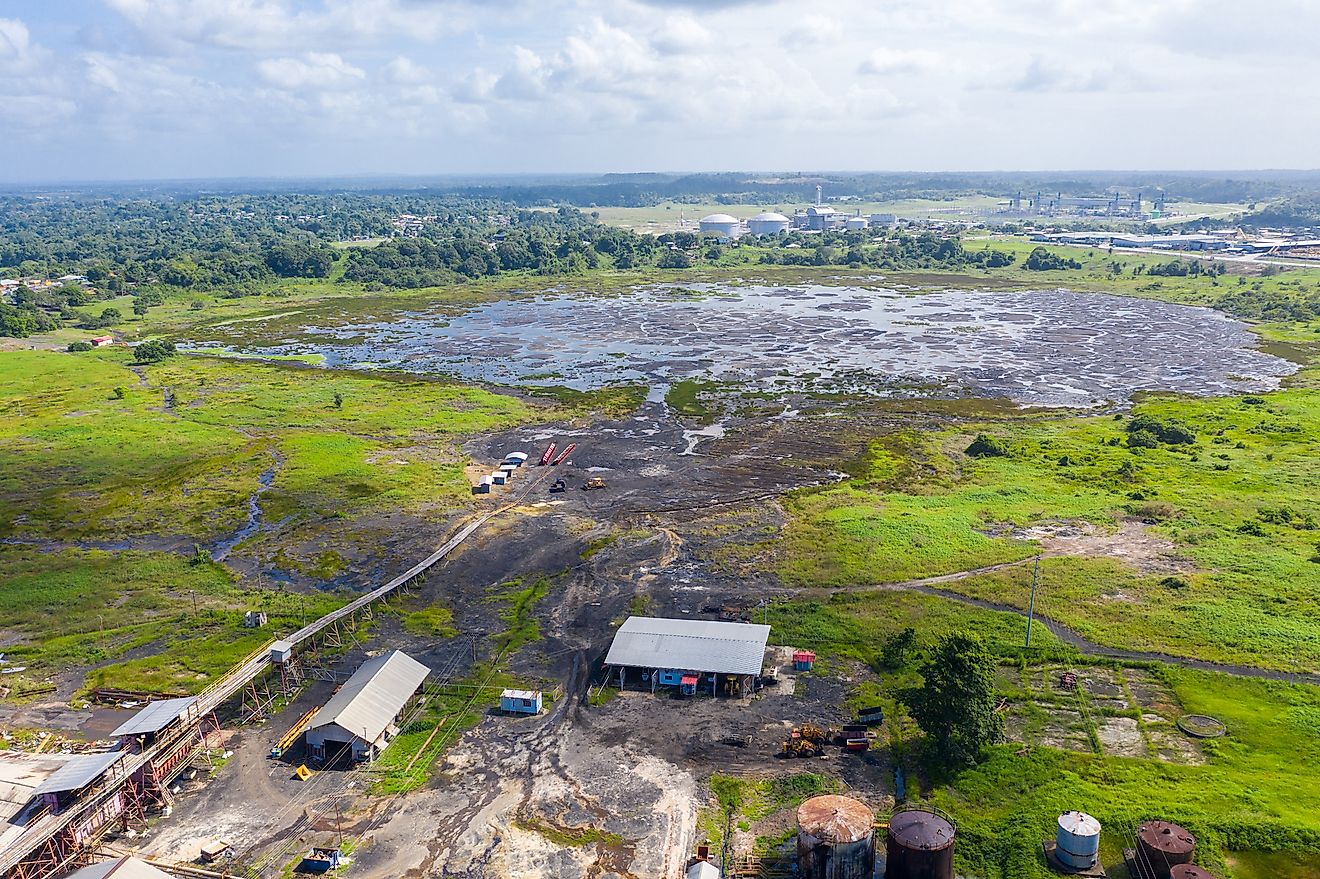
Asphalt lakes or pitch lakes are tar pits that form when a type of petroleum called bitumen is forced from underground up to the Earth's surface. Usually occurring along fault lines, the bitumen pools at the surface and the lighter elements vaporize, leaving a pool of natural asphalt. Mining for asphalt and tourism are important economic activities associated with such lakes. The world's five known natural asphalt lake areas are highlighted below.
Pitch Lake
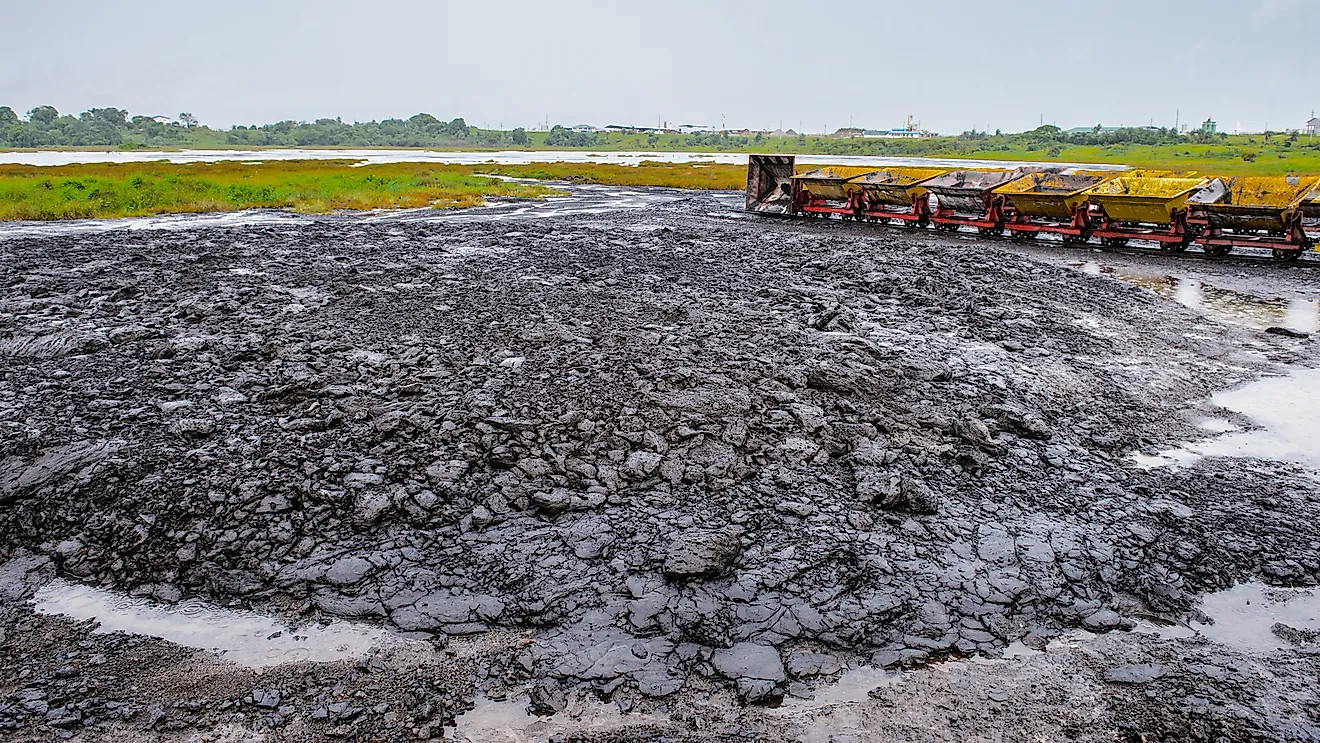
Pitch Lake is the largest natural asphalt deposit in the world. Located in the town of La Brea on the island nation of Trinidad and Tobago, the lake holds about 10 million tons of asphalt and is approximately 250 feet deep. Pitch Lake has a unique microbial diversity composed of both bacterial and archaeal colonies. Many new species of microbes have been discovered there, and even new species of fungi have been found in the lake. The lake is believed to exist at the intersection of two faults, and oil from deep underneath has seeped to the surface. When the more volatile and lighter compounds evaporate, the asphalt remains. Today, Pitch Lake is a popular tourist spot. A small museum has been built at Pitch Lake showcasing the history of the lake. Asphalt mining is also an important economic activity in the region.
La Brea Tar Pits
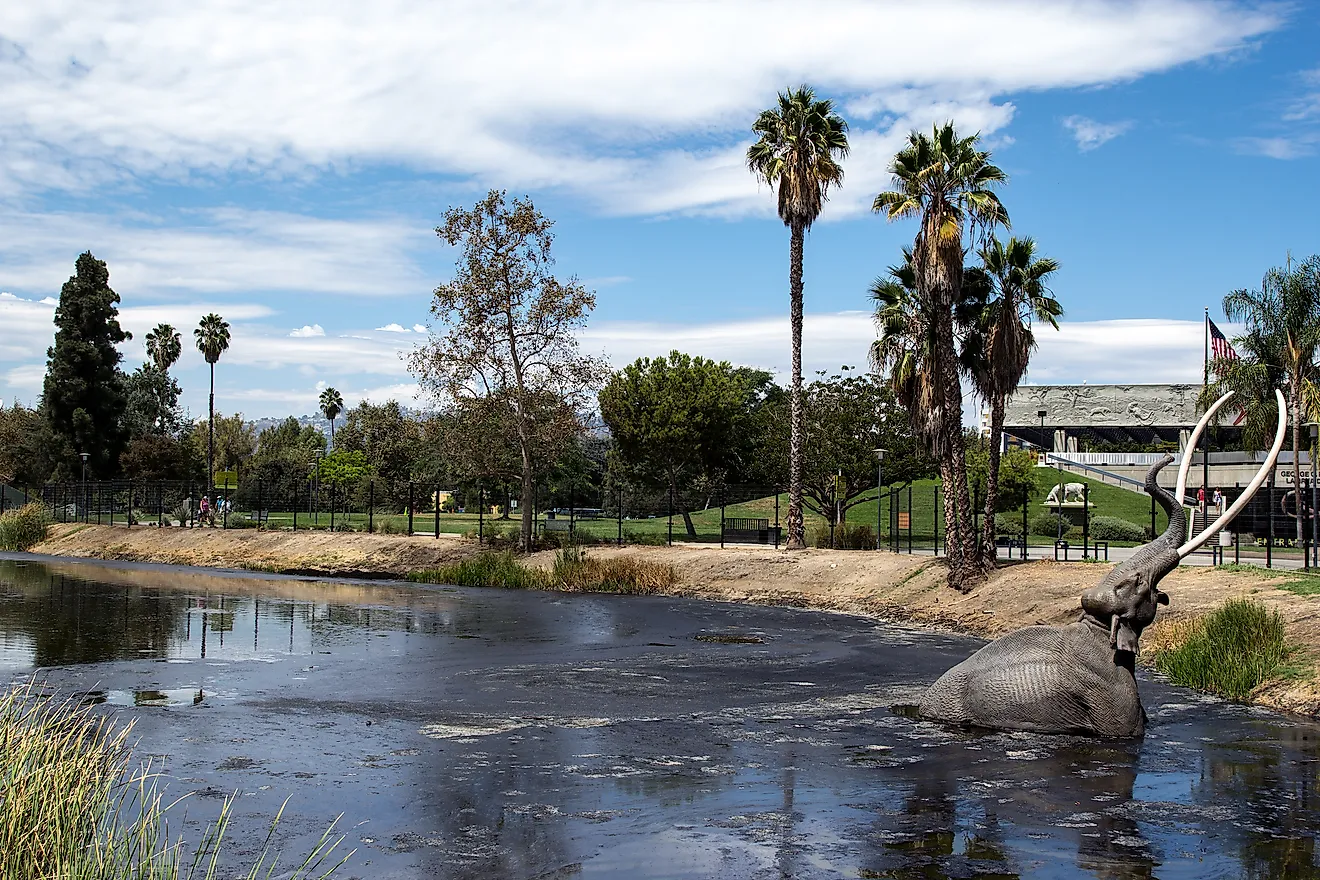
The La Brea Tar Pits are a group of tar pits located in Los Angeles, California, USA. The pits are the central feature of Hancock Park which was created in 1924. The oil that forms the tar pits seeps to the surface from the nearby Salt Lake Oil Field through the 6th Street Fault. The seeping oil forms pools in several locations in Hancock Park and becomes asphalt after the more volatile components of the oil evaporate. An interesting feature of the La Brea Tar Pits is the discovery of fossils from prehistoric species trapped in the asphalt. Over a period of centuries, the bones of these animals were preserved in the tar. A nearby museum preserves the fossils of these pre-historic species, including a saber-tooth cat, giant ground sloths, dire wolves, and turtles.
Lake Bermudez
Lake Bermudez, also known as Lake Guanoco, is a large asphalt lake located in Estado Sucre, Venezuela. Occupying an area of about 445 hectares, it is bigger than the Pitch Lake by area but smaller in terms of volume. The depth of Lake Bermudez varies between 4.9 feet and 6.6 feet. The asphalt from the lake has long been used by local indigenous populations, such as the Warao people who used it to waterproof canoes. Commercial mining of asphalt from the lake by a US company later occurred with permission from the Venezuelan government. The mining began in 1890, but soon created controversy and internal conflict within the country. Asphalt mining in the lake was stopped in 1934 and has not been resumed.
McKittrick Tar Pits
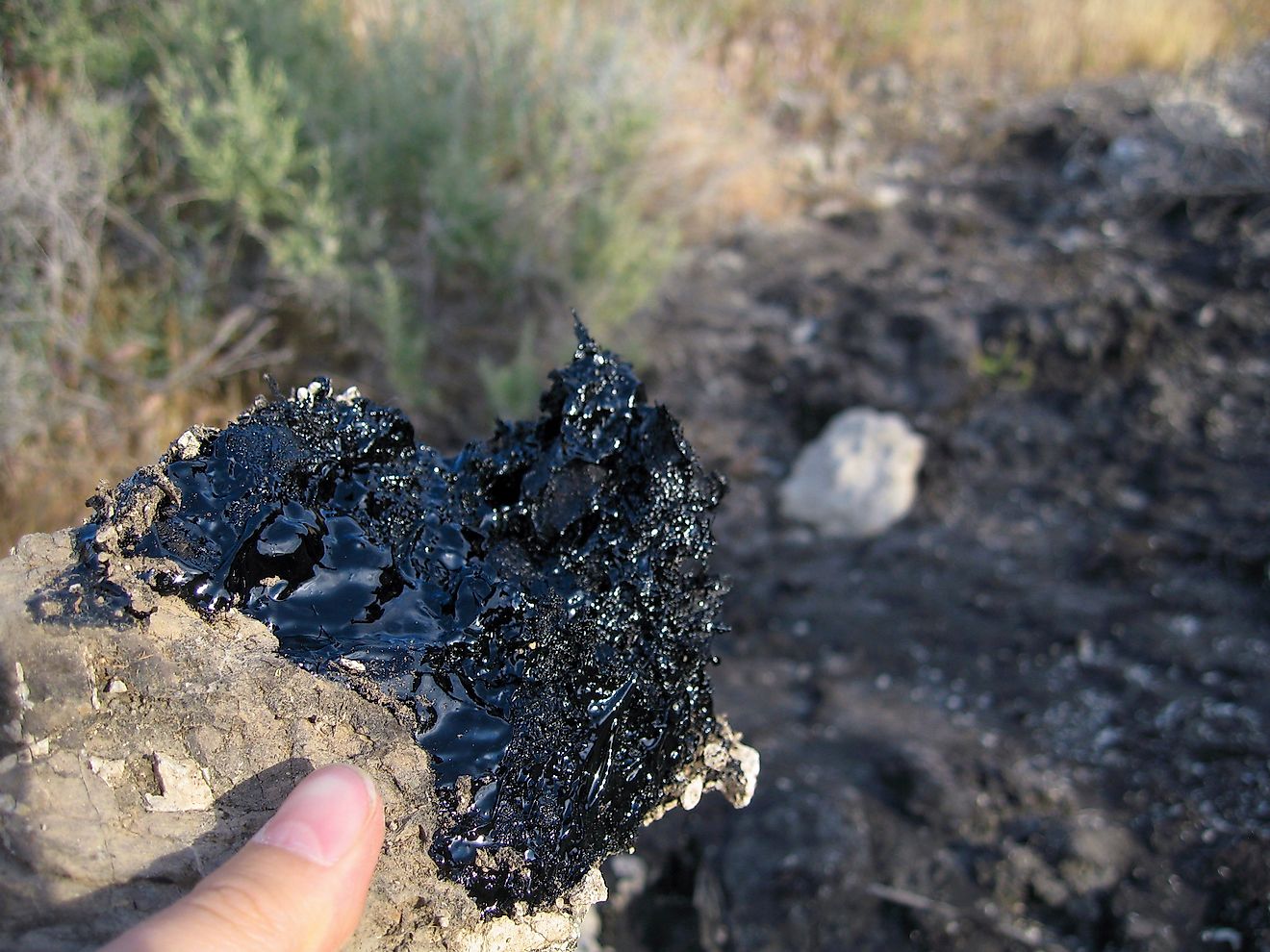
The McKittrick Tar Pits are a series of natural asphalt lakes located in Kern Country, California, USA. The existence of the tar pits has long been known by the indigenous populations, and the asphalt was used by locals for trade, decoration, and waterproofing. Commercial asphalt mining in the area started in the 1860s. The tar pits have also yielded significant paleontological information, since they preserved the bones of hundreds of animals from the Pleistocene Age.
Carpinteria Tar Pits
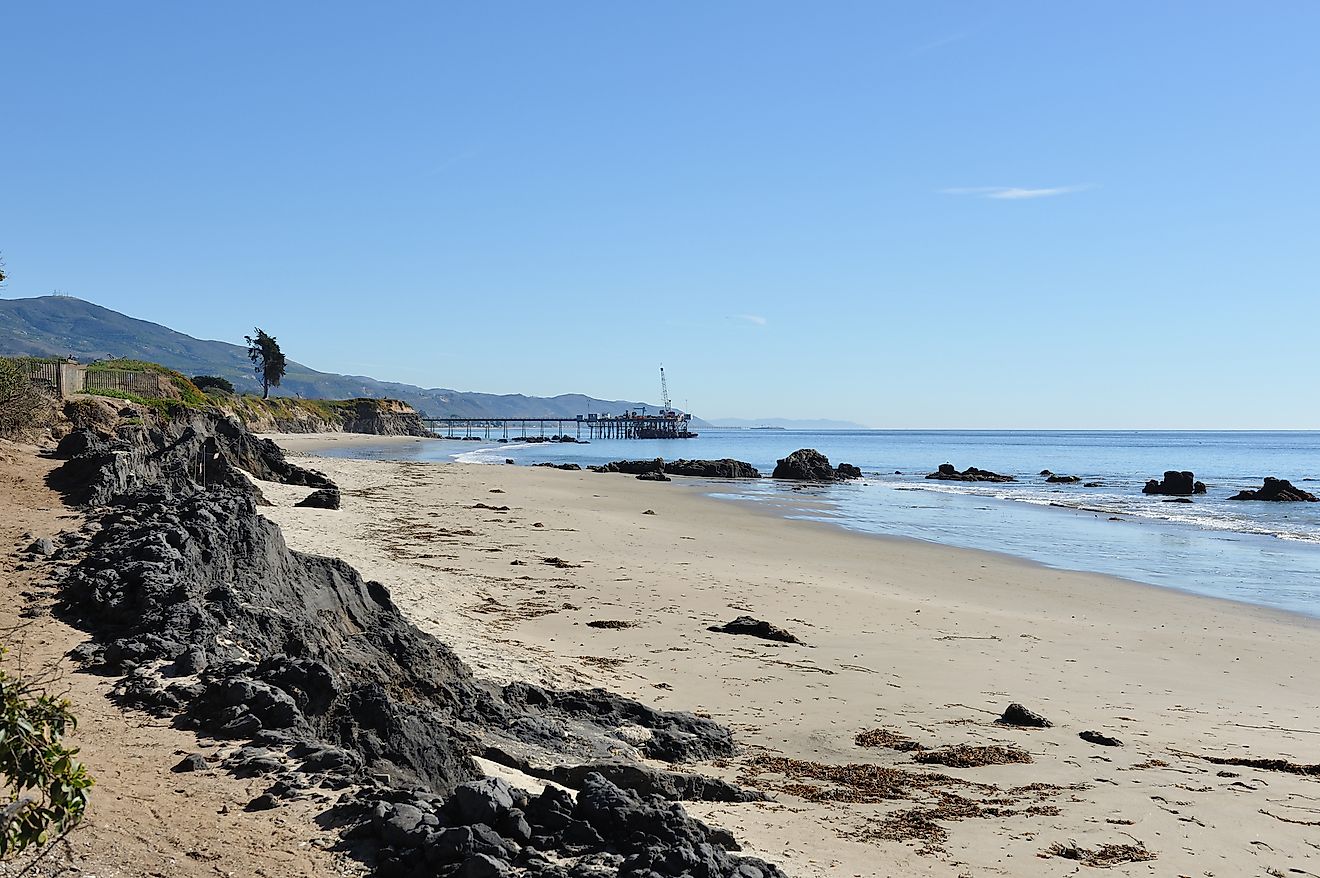
The Carpinteria Tar Pits are a series of asphalt lakes located in the southern part of Santa Barbara County, California, USA. The asphalt lakes are part of a designated park named Tar Pits Park. The tar pits are all located directly on the beach and are created by oil originating from the Carpinteria Offshore Oil Field. The asphalt was used by the indigenous population long before the arrival of Europeans, especially as a sealant to make their boats waterproof.











